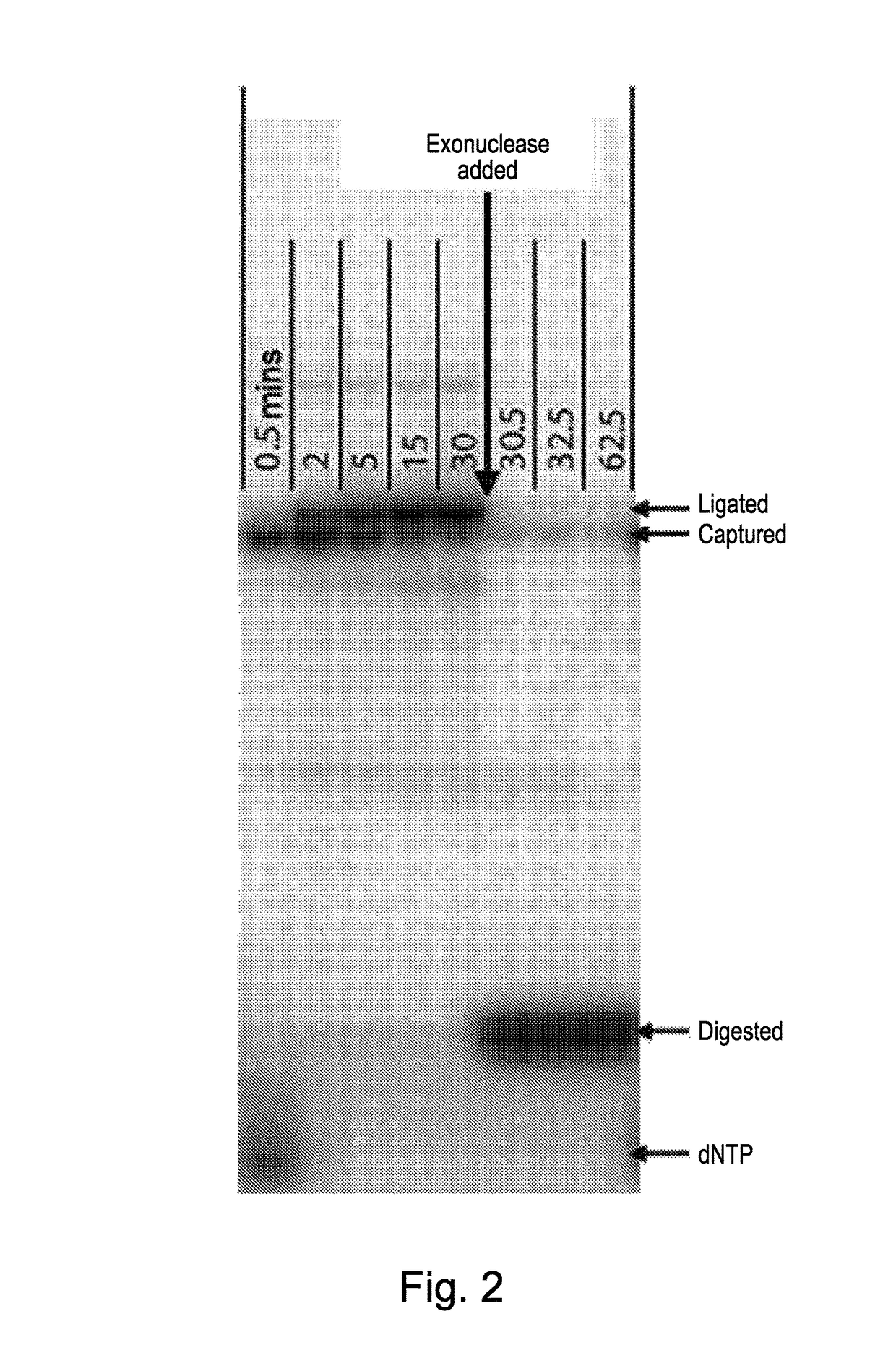Single nucleotide detection method
a single nucleotide and detection method technology, applied in biochemistry apparatus and processes, laboratories, instruments, etc., can solve problems such as computational complexity and potential introduction of errors, characteristic fluctuations in current flow or resistivity, and limited speed of operation
- Summary
- Abstract
- Description
- Claims
- Application Information
AI Technical Summary
Benefits of technology
Problems solved by technology
Method used
Image
Examples
first embodiment
[0023]In step (2) of the method of the present invention each single nucleotide base generated in step (1) is captured by a capture system itself comprising an oligomer of nucleotide bases. Preferably, before this step is carried out the aqueous medium containing the single nucleotide bases is treated with a pyrophosphatase to hydrolyse any residual pyrophosphate to phosphate anion. In a first embodiment, the capture system comprises one of a class of pairs of first and second oligonucleotides. The first oligonucleotide in such a pair preferably comprises (a) a first double-stranded region and (b) a second single-stranded region comprised of n nucleotide bases wherein n is greater than 1 preferably greater than 5. In one sub-class, the first oligonucleotide can be regarded as having a molecular structure derived from a notional or actual single-stranded oligonucleotide precursor where the double-stranded region has been created by partially folding the 3′ end of the precursor back o...
second embodiment
[0025]In a second embodiment, the capture system comprises a class of single oligonucleotides each consisting of a single-stranded nucleotide region the ends of which are attached to two different double-stranded regions. In the capture systems of this class, the single-stranded nucleotide region is comprised of one nucleotide base only making the probe extremely selective for the detection of the target i.e. the complimentary single nucleotide base in the droplet stream.
[0026]Turning to the double-stranded oligonucleotide region(s), it is preferred that they are derived or derivable from two oligonucleotide precursors, each preferably closed looped, or from a common single-stranded oligonucleotide precursor by folding the latter's ends back on themselves to create two closed-loop oligonucleotide base regions with an intermediate gap constituting the single-stranded nucleotide region. In all cases the effect is the same; adjacent to the ends of the single-stranded nucleotide region ...
PUM
| Property | Measurement | Unit |
|---|---|---|
| time | aaaaa | aaaaa |
| temperature | aaaaa | aaaaa |
| Förster distance | aaaaa | aaaaa |
Abstract
Description
Claims
Application Information
 Login to View More
Login to View More - R&D
- Intellectual Property
- Life Sciences
- Materials
- Tech Scout
- Unparalleled Data Quality
- Higher Quality Content
- 60% Fewer Hallucinations
Browse by: Latest US Patents, China's latest patents, Technical Efficacy Thesaurus, Application Domain, Technology Topic, Popular Technical Reports.
© 2025 PatSnap. All rights reserved.Legal|Privacy policy|Modern Slavery Act Transparency Statement|Sitemap|About US| Contact US: help@patsnap.com



